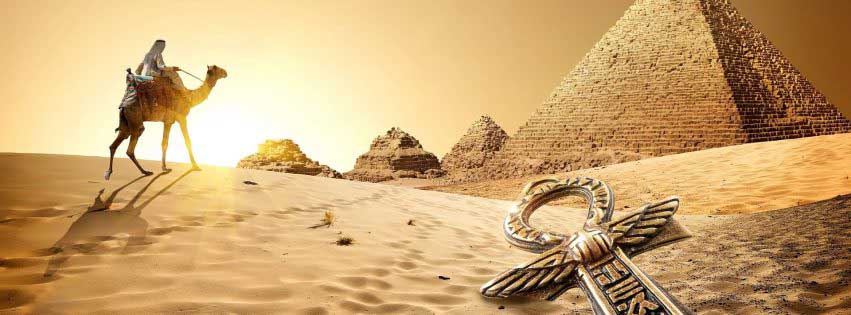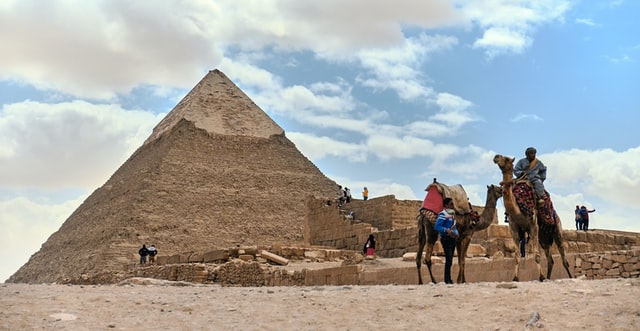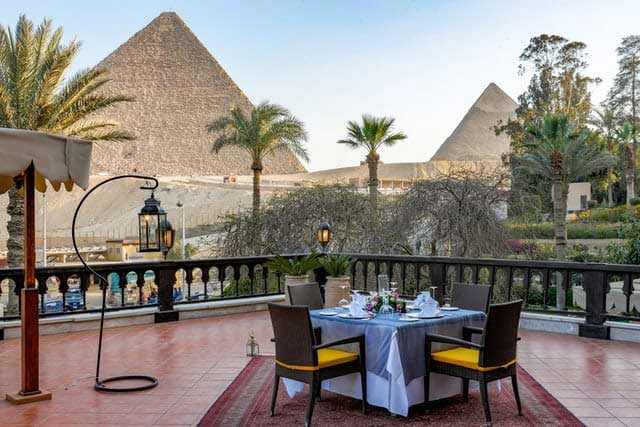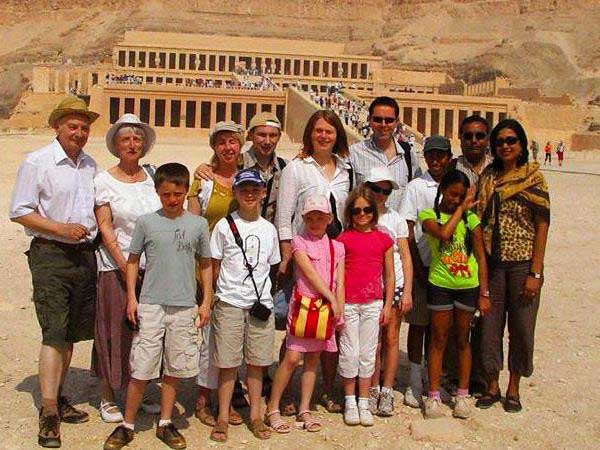Saqqara
Saqqara covers a mammoth area, so if you’re short on time, limit your sightseeing to the Imhotep Museum, the Step Pyramid, the Pyramid of Teti, the Serapeum, and the Mastaba of Ti to see the best of Saqqara.
Covering a 7km stretch of the Western Desert, Saqqara, the huge cemetery of ancient Memphis, was an active burial ground for more than 3500 years and is Egypt’s largest archaeological site. The necropolis is situated high above the Nile Valley’s cultivation area, and is the final resting place for deceased pharaohs and their families, administrators, generals and sacred animals. The name Saqqara is most likely derived from Sokar, the Memphite god of the dead.
Old Kingdom pharaohs were buried within Saqqara’s 11 major pyramids, while their subjects were buried in the hundreds of smaller tombs. Most of Saqqara, except for the Step Pyramid, was buried in sand until the mid-19th century, when the great French Egyptologist Auguste Mariette uncovered the Serapeum. Since then, it has been a gradual process of rediscovery: the Step Pyramid’s massive funerary complex was not exposed until 1924, and it is in a constant state of restoration. French architect Jean-Philippe Lauer, who began work here in 1926, was involved in the project for an incredible 75 years until his death in 2001. More recently, there has been a string of new discoveries, including a whole slew of mummies and even a new pyramid.
This article contains information for foreigners who wish to visit Saqqara Necropolis including:
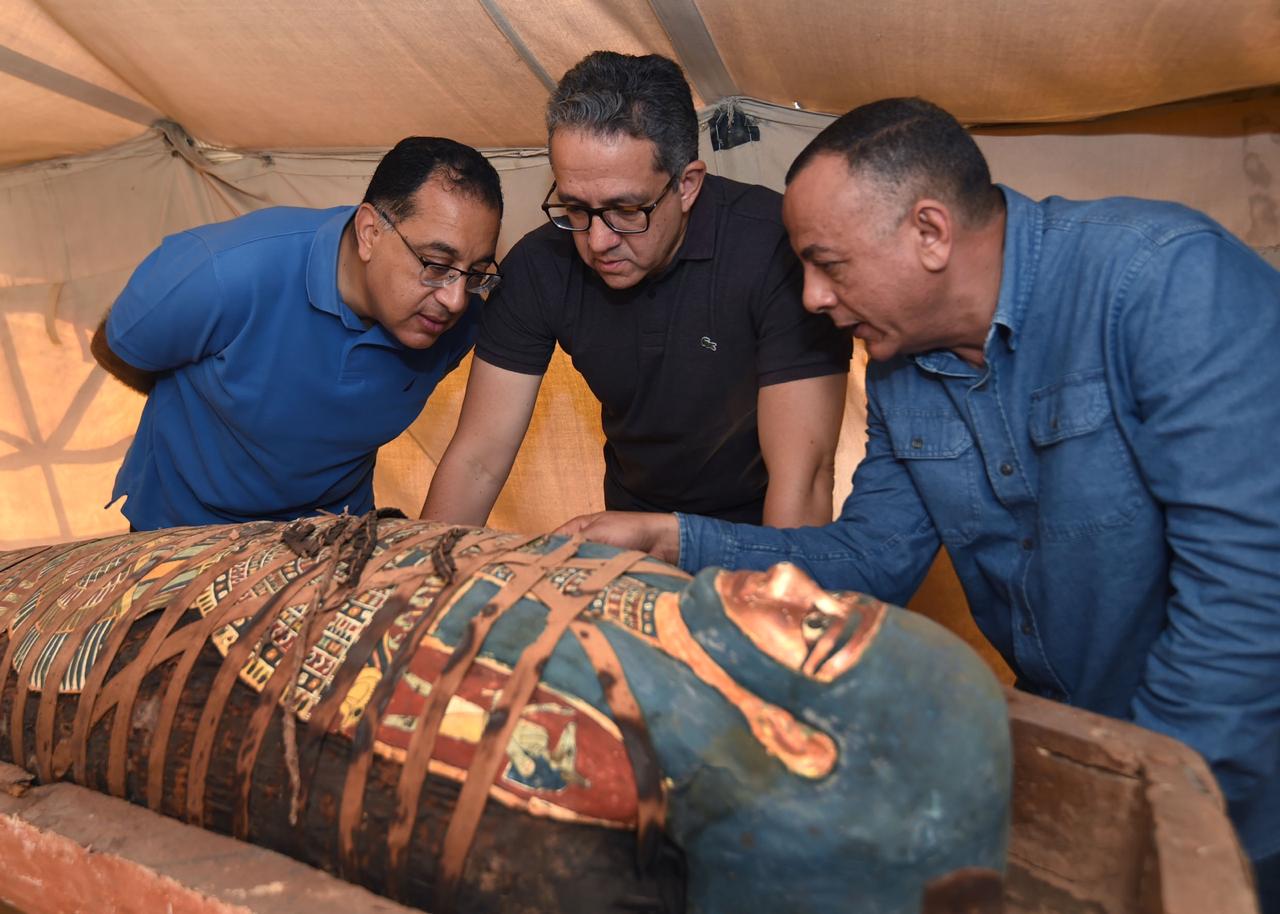
What is in the Necropolis of Saqqara?
Saqqara is an Egyptian village in Giza Governorate, that’s world-widely known for its vast, ancient burial ground of Egyptians kings and royals, serving as the necropolis for the ancient Egyptian capital, Memphis. Saqqara contains numerous pyramids, including the world-famous Step pyramid of Djoser, sometimes referred to as the Step Tomb, and a number of mastaba tombs. Located some 30 km (19 mi) south of modern-day Cairo, Saqqara covers an area of around 7 by 1.5 km (4.3 by 0.9 mi).
At Saqqara, the oldest complete stone building complex known in history was built, the Pyramid of Djoser, built during the Third Dynasty. Another sixteen Egyptian kings built pyramids at Saqqara, which are now in various states of preservation. High officials added private funeral monuments to this necropolis during the entire Pharaonic period. It remained an important complex for non-royal burials and cult ceremonies for more than 3,000 years, well into Ptolemaic and Roman times.
Where is Saqqara located?
Drive approximately 17 miles (27 kilometers) south of downtown Cairo and you’ll find yourself in Saqqara, the vast necropolis of the Ancient Egyptian capital of Memphis. Named for the Memphite god of the dead, Sokar, this is Egypt’s largest archaeological site. Its pyramids may not be as famous as the ones located in nearby Giza, but some of them (specifically the iconic Pyramid of Djoser) are considerably older. For those with an interest in archaeology, these trend-setting structures are amongst the country’s must-see ancient sights.&
How to Visit Saqqara
There are no public transport routes from Cairo to Saqqara, so unless you plan on hiring a car, a private taxi is your only option for exploring independently. If you don’t feel like haggling over prices with a driver on the street, ask your hotel to organize a taxi for you. Because the site is so vast, it’s worth hiring a driver for the whole day so that they can ferry you in between Saqqara’s most important sites.
Many travel agencies, hotels and tour companies offer half or full-day tours to Saqqara. Although visiting with a group means that you have less freedom to explore at will, it can be a relief to have all costs included while the insight of a professional Egyptologist is invaluable. Many tours include visits to the nearby sites of Memphis and the Dahshur necropolis as well.
How much does it cost to visit the Saqqara Necropolis?
Tickets, which cost 200 Egyptian pounds (approximately $14) for adults and 100 Egyptian pounds (or $7) for students, can be purchased at the entrance’s visitors center.
Things to remember before visiting Saqqara
Timing your trip carefully can make all the difference to your experience at Saqqara. The Egyptian workweek runs from Sunday to Thursday, and traffic getting in and out of Cairo can be stressful on these days. To avoid wasting time sitting in gridlock, try to plan your outing for Friday or Saturday instead. Similarly, the time of day is important, especially in summer. Plan to visit as early as possible so that you can avoid the midday heat.
Things to bring with you during visiting Saqqara
There is little shade and no refreshment available at the necropolis, so plan accordingly by bringing sunscreen, a hat, water and a picnic. Comfortable walking shoes and a flashlight for illuminating the tombs’ dim interiors are a good idea as well. Lastly, don’t forget that Saqqara is huge. Instead of trying to see everything in a single morning or afternoon, pick your must-see sights and focus on those.
History of Saqqara
The custom of burying pharaohs at Saqqara dates back thousands of years to the time of the First Dynasty, when kings ruled over a united Egypt for the first time. No fewer than 17 pharaohs are known to have chosen Saqqara as their final resting place and royals, their family members, sacred animals and important officials continued to be buried there for more than 3,000 years. Today, the Saqqara necropolis covers an area of 4 square miles (10 square kilometers).
When the burial site fell out of use during the time of the Romans, it was gradually reclaimed by the desert. With the exception of the Pyramid of Djoser, the entire site was buried in sand by the time French Egyptologist Auguste Mariette uncovered the Serapeum in the mid-19th century. Since then, a constant process of excavation, recovery and restoration has been taking place at Saqqara. In 1979, it was inscribed as a UNESCO World Heritage Site along with the pyramid fields that run from Giza to Dhashur.
Saqqara Attractions
Pyramid of Teti
Many of Saqqara’s later pyramids were built during a time of economic hardship, and the inferior materials used have not withstood the test of time. Ten pyramids remain in addition to Djoser’s masterpiece, some of which are open for exploration. Of these, the most interesting is the Pyramid of Teti, a pharaoh of the Sixth Dynasty whose inscribed basalt sarcophagus still lies inside the burial chamber. Hieroglyphic spells from the Pyramid Texts adorn the interior walls.
The Serapeum
The Serapeum, or underground burial chamber of the Apis bulls, is another highlight of the site. Kept and worshipped at the Temple of Ptah in Memphis during their lifetime, the sacred bulls were mummified after death and carried to the Serapeum to be buried in stone sarcophagi. This practice lasted for over 1,300 years, only ceasing in 30 B.C.
Mastabas of Kagemni and Ti
Saqqara is also home to an impressive array of tombs and mastabas in varying states of repair. The best include the Mastaba of Kagemni, Teti’s chief justice; and the Mastaba of Ti, the overseer of the pyramids at Abusir. The reliefs and friezes of the latter tomb have been painstakingly restored and are considered one of the finest existing examples of Old Kingdom art. They depict scenes of daily life in Ancient Egypt accompanied by hieroglyphic dialogue.
Imhotep Museum
To learn more about this and other rituals of the Old Kingdom, make sure to visit the Imhotep Museum, located at the entrance to Saqqara. Its five halls showcase some of the site’s most interesting finds, including the wooden coffin of Imhotep himself; the oldest complete royal mummy ever found and a recreation of the library of French architect Jean-Philippe Lauer. Lauer is famous for making excavating and restoring Saqqara’s treasures his life’s work.
Recommended Tours to Saqqara
https://bastettravel.com/egypt-day-tours/cairo-tours/pyramids-saqqara-and-memphis/
Frequently asked questions about visiting Egypt
Is it safe to travel to Egypt
Is it safe to travel to Egypt?
Is Egypt Safe for Americans to Travel to
Is Egypt Safe for Americans to Travel to?
We get this question a lot at Bastet Travel In short, Americans and other visitors can rest easy: yes, Egypt is a safe country for tourists. And the rest of the world seems to agree — after years of middling numbers, tourism in Egypt is steadily rising towards its former highs, hosting over 9 million sightseers in 2018. The longer answer is worth exploring, though, and we have some assurances to offer all our clients who join us on all of our Egypt Travel Packages.Is a negative COVID-19 test (PCR and/or serology) required for entry?
- Yes.
- All passengers travelling to Egypt (including Egyptians) must be in possession of negative PCR test certificate for COVID-19, taken at a maximum of 72 hours before their flight departure time.
- Passengers travelling from Japan, China, Thailand, North America, South America, Canada, London Heathrow, Paris, and Frankfurt will be allowed to provide the test certificate performed at a maximum of 96 hours prior to flight departure, due to the long travel and transit period from these airports.
- Although we understand the PCR testing policy to require a test result performed no more than 96 hours before the original departing flight, we have received anecdotal reports that some travelers have been denied entry when their PCR test was performed more than 96 hours prior to the departure of their connecting flight.
- Travelers must present paper copies of the test results; digital copies will not be accepted.
- Children under the age of six of all nationalities are exempt.
Are PCR and/or antigen tests available for US citizens in Egypt?
Yes, at numerous private testing centers, as well as the Central Public Health Lab.
Has the government of Egypt approved a COVID-19 vaccine for use?
Yes
Which vaccines are available in Egypt?
AstraZeneca and Sinopharm.
Are vaccines available in Egypt for tourists to receive?
Yes, the media has reported that anyone over age 18, including foreign residents, can now register for the vaccine. There is limited supply of the vaccine available and the media reports that priority for the vaccine will go to the elderly and those with chronic illnesses.
Are test results reliably available within 72 hours?
Yes. Most test providers offer 48-hour turnaround. Faster service is possible at extra cost.
How can I obtain my Visa to visit Egypt?
How can I obtain my visa to visit Egypt?
What do i need to know when traveling to Egypt?
A few Things to Know Before Traveling to Egypt
You need a visa, and you can buy it upon arrival. The dollar goes far in Egypt. The traffic in Cairo/Giza is outrageous, but taxis (and Ubers) are cheap. You should not skip the Pyramids and Sphinx. The Pyramids and Sphinx are just the beginning of the ancient treasures. Islamic Cairo is amazing. Aswan should not be missed The Sahara is more than sand It is safer than you thinkWhat are the best day trips in Egypt
What are the most famous tourist attractions in Egypt
What are the most famous tourist attractions in Egypt?
Egypt has so much for travelers to see and do, it’s the perfect country for a mix of activities combining culture, adventure, and relaxation. Find the best places to visit with our list of the top tourist attractions in Egypt.- Pyramids of Giza
- Valley of the kings
- Luxor’s Karnak Temple
- The Egyptian Museum
- Christian and Islamic Cairo
- The White Desert and Baharyia Oasis
- Siwa Oasis
- Abu simbel Temples
- Aswan
- Alexandria
- St. Catherine’s Monastery
- The Nubian village
- Nile River Cruise
- Hurghada
- South of Sinai
Related Articles
Related
Seth
Also known as Set, Setekh, Suty and Sutekh, Seth was the god of chaos, darkness, violence, evil, deserts, storms, and one of the Osirian gods. In the Osiris myth, he is the murderer of Osiris (in some versions of the myth, he tricks Osiris into laying down in a coffin and then seals it shut.)
Ancient Egyptian Gods And Goddesses
For all ancient Egyptians, the world was filled with mystery. Much of what they experienced in the world around them was unknowable and frightening. The ancient Egyptian gods and goddesses represented aspects of the Egyptians’ natural and “supernatural” surroundings and helped them understand its many aspects.
Horus
Depicted as a falcon or as a man with a falcon’s head, Horus was a sky god associated with war and hunting. He was also the embodiment of the divine kingship, and in some eras the reigning king was considered to be a manifestation of Horus.



